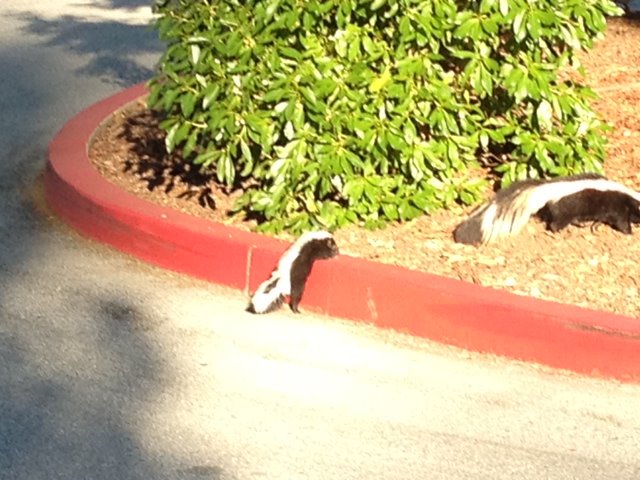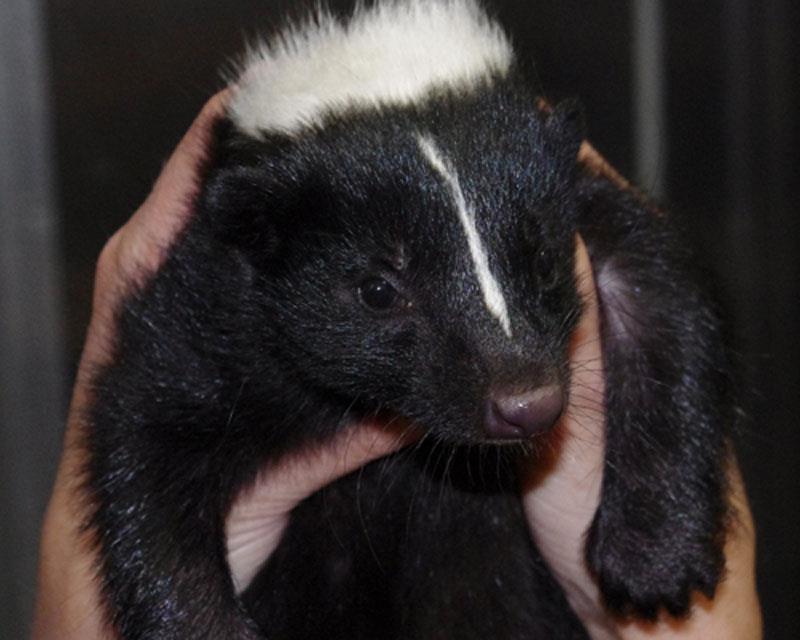
Most people associate February with the scent of roses, but there is another scent that seems to be everywhere this time of year, too. Striped skunks (Mephitis mephitis) around the Bay Area are on edge due to breeding season, using their foul-smelling spray to communicate to each other and protect themselves as they wander looking for mates.
Although striped skunks are known for their striking black and white coloration, they are equally famous for their defensive spray. Skunks have two anal scent glands that allow them to spray a sulfur-rich fluid that smells similarly to garlic mixed with rotten eggs. This fluid can reach over 20 feet away in favorable wind, but is most accurate within 6 feet. Females may spray a male if they do not want to mate, males may spray each other when defending territory and all skunks will spray when they feel threatened. Skunk spray can cause irritation, temporary blindness and can reach up to one mile away. Often people smell skunk spray when the anal glands collapse under pressure from car impact.

Skunks often give several warnings to a predator before spraying; spraying is really a last resort. If they use all of the fluid in their scent glands, it takes roughly 10 days for their bodies to replenish it. Skunks begin by raising their tails to appear larger in the hopes of discouraging a predator from coming closer. Striped skunks will then stamp their front feet to intimidate them. During this time of the year, skunks are so focused on breeding that they may startle more easily and spray sooner. They are nocturnal to crepuscular, relying on their sense of smell to survive more than eyesight. Because skunks have terrible eyesight, the best way to avoid being sprayed is to let them know you are trekking in their territory by making sounds so they know you are near. This will give them ample time to get away.

Gestation for striped skunks is about 66 days. Females give birth to a litter of 4-7 kits and generally live 2-3 years in the wild. Once the kits become adults, they will eat vegetation, meat and bugs. Their main predator is the great horned owl, which does not have a sense of smell. If you want to see a skunk up close without the fear of being sprayed, visit the education skunk, “Oliver,” at CuriOdyssey at Coyote Point!